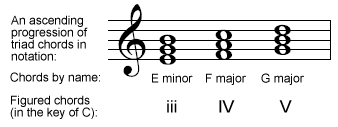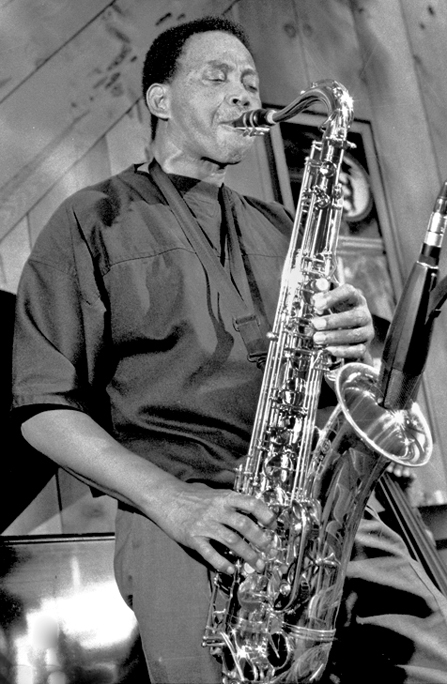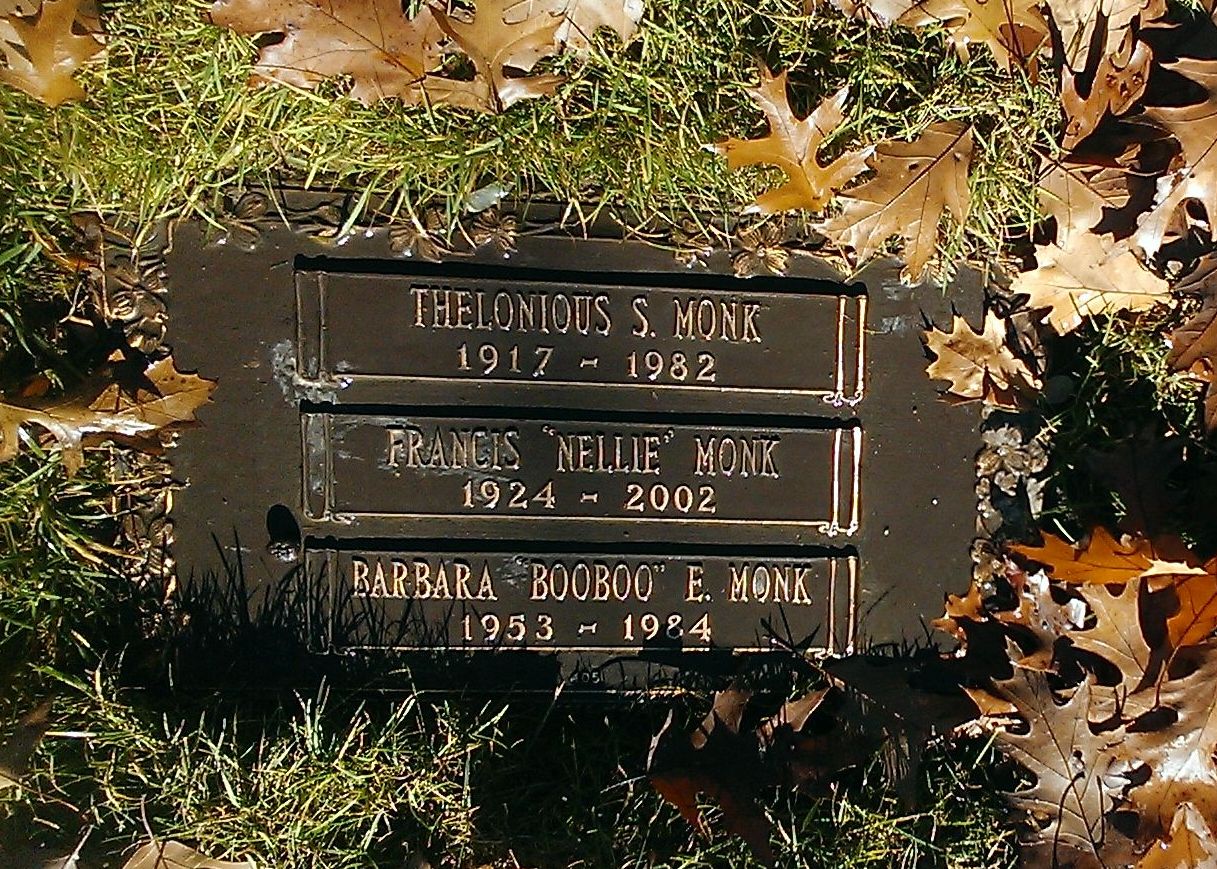|
Coltrane Changes
Coltrane changes (Coltrane Matrix or cycle, also known as chromatic third relations and multi-tonic changes) are a harmonic progression variation using substitute chords over common jazz chord progressions. These substitution patterns were first demonstrated by jazz musician John Coltrane on the albums ''Bags & Trane'' (on the track "Three Little Words") and '' Cannonball Adderley Quintet in Chicago'' (on "Limehouse Blues"). Coltrane continued his explorations on the 1960 album ''Giant Steps'' and expanded on the substitution cycle in his compositions "Giant Steps" and "Countdown", the latter of which is a reharmonized version of Eddie Vinson's "Tune Up". The Coltrane changes are a standard advanced harmonic substitution used in jazz improvisation. Function The changes serve as a pattern of chord substitutions for the ii–V–I progression (supertonic– dominant– tonic) and are noted for the tonally unusual root movement by major thirds (either up or down by a major third int ... [...More Info...] [...Related Items...] OR: [Wikipedia] [Google] [Baidu] |
Chord Progression
In a musical composition, a chord progression or harmonic progression (informally chord changes, used as a plural, or simply changes) is a succession of chords. Chord progressions are the foundation of harmony in Western musical tradition from the common practice era of Classical music to the 21st century. Chord progressions are the foundation of popular music styles (e.g., pop music, rock music), traditional music, as well as genres such as blues and jazz. In these genres, chord progressions are the defining feature on which melody and rhythm are built. In tonal music, chord progressions have the function of either establishing or otherwise contradicting a tonality, the technical name for what is commonly understood as the " key" of a song or piece. Chord progressions, such as the extremely common chord progression I-V-vi-IV, are usually expressed by Roman numerals in Classical music theory. In many styles of popular and traditional music, chord progressions are expressed ... [...More Info...] [...Related Items...] OR: [Wikipedia] [Google] [Baidu] |
Augmented Triad
An augmented triad is a chord, made up of two major thirds (an augmented fifth). The term ''augmented triad'' arises from an augmented triad being considered a major chord whose top note (fifth) is raised. When using popular-music symbols, it is indicated by the symbol "+" or "aug". For example, the augmented triad built on A, written as A+, has pitches A-C-E: The chord can be represented by the integer notation . Analysis Whereas a major triad, such as C–E–G, contains a major third (C–E) and a minor third (E–G), with the interval of the fifth (C–G) being perfect, the augmented triad has an augmented fifth, becoming C–E–G. In other words, the top note is raised a semitone. H.R. Palmer notes: The augmented chord on I may contain the major seventh (I () or I ()), while the augmented chord on V may contain the minor seventh (V (), V (), or V ()). In C: C–E–G–B and G–B–D–F. The augmented triad on the V may be used as a substitute dominant, and ... [...More Info...] [...Related Items...] OR: [Wikipedia] [Google] [Baidu] |
Granoff School Of Music
The Granoff School of Music is a music school in Philadelphia, Pennsylvania. It was founded by Isadore Granoff (1902 - 2000), a Ukrainian immigrant. Alumni of Granoff include Dizzy Gillespie, Sonny Fortune, McCoy Tyner and John Coltrane. Some of his students later became well-known classical, jazz Jazz is a music genre that originated in the African-American communities of New Orleans, Louisiana, in the late 19th and early 20th centuries. Its roots are in blues, ragtime, European harmony, African rhythmic rituals, spirituals, h ..., swing, big band and Latin musicians. References Educational institutions in the United States with year of establishment missing Music schools in Pennsylvania Schools in Philadelphia Defunct schools in Pennsylvania 1970 disestablishments in Pennsylvania {{Pennsylvania-university-stub ... [...More Info...] [...Related Items...] OR: [Wikipedia] [Google] [Baidu] |
Dennis Sandole
Dennis Sandole (29 September 1913 — 30 September 2000) born Dionigi Sandoli, was an American jazz guitarist, composer, and music educator from Philadelphia. Biography Sandole was John Coltrane's mentor from 1946 until the early 1950s, introducing him to music theory beyond chords and scales and exposing him to the music of other cultures. Sandole taught advanced harmonic techniques that were applicable to any instrument, using exotic scales and creating his own. He taught privately until the end of his life. His students included saxophonists James Moody, Benny Golson, Michael Brecker, Rob Brown and Bobby Zankel; trumpeter Art Farmer; pianists Matthew Shipp and Sumi Tonooka; guitarists Jim Hall, Joe Diorio, Pat Martino, Frank Gerard, Jon Herington, Bob DeVos, Harry Leahey, and Rufus Harley. Sandole recorded ''Modern Music from Philadelphia,'' with his brother, Adolf Sandole (1922–1959), which was released by Fantasy Records Fantasy Records is an American independ ... [...More Info...] [...Related Items...] OR: [Wikipedia] [Google] [Baidu] |
Harmony
In music, harmony is the concept of combining different sounds in order to create new, distinct musical ideas. Theories of harmony seek to describe or explain the effects created by distinct pitches or tones coinciding with one another; harmonic objects such as chords, textures and tonalities are identified, defined, and categorized in the development of these theories. Harmony is broadly understood to involve both a "vertical" dimension (frequency-space) and a "horizontal" dimension (time-space), and often overlaps with related musical concepts such as melody, timbre, and form. A particular emphasis on harmony is one of the core concepts underlying the theory and practice of Western music. The study of harmony involves the juxtaposition of individual pitches to create chords, and in turn the juxtaposition of chords to create larger chord progressions. The principles of connection that govern these structures have been the subject of centuries worth of theoretical work ... [...More Info...] [...Related Items...] OR: [Wikipedia] [Google] [Baidu] |
Hasaan Ibn Ali
Hasaan Ibn Ali (born William Henry Langford, Jr.; May 6, 1931 – 1980) was an American jazz pianist and composer. Ibn Ali was strongly influenced by Elmo Hope, and his playing was rapid and intense, retaining a sense of rhythm even when his style became increasingly unconventional. Only one recording of his playing – ''The Max Roach Trio Featuring the Legendary Hasaan'' – was released in his lifetime. Ibn Ali built a reputation in Philadelphia, where he influenced musicians including John Coltrane, but he remained little known elsewhere. Life and career Hasaan Ibn Ali was born William Henry Langford, Jr. in Philadelphia on May 6, 1931.Lee, William F. (1984) ''People in Jazz''. p. 163. Columbia Lady Music. . His mother was a domestic worker. In 1946 (aged 15), he toured with trumpeter Joe Morris (trumpeter), Joe Morris's rhythm and blues band.Porter, Lewis (1998) ''John Coltrane: His Life and Music''. p. 88. University of Michigan Press. . In 1950, he played locally with Cli ... [...More Info...] [...Related Items...] OR: [Wikipedia] [Google] [Baidu] |
Odean Pope
Odean Pope (born October 24, 1938) is an American jazz tenor saxophonist. Biography Pope was born in Ninety Six, South Carolina to musical parents and moved to North Philadelphia at the age of 10, where he learned from Ray Bryant. His talent at the Granoff School of Music and Benjamin Franklin High School caught the attention of fellow North Philadelphia resident and jazz saxophonist John Coltrane, who offered him his first job in music at age 17. Coltrane had called Pope to inform him that he was leaving to join Miles Davis and asked him to take his place and play with Jimmy Smith. Pope hesitated, expressing his youth and doubt, to which Coltrane responded, "Never say that. Always say you CAN do something." Early in his career, at Philadelphia's Uptown Theater, Pope played behind a number of noted rhythm and blues artists including James Brown, Marvin Gaye and Stevie Wonder. He played briefly in the 1960s with Jimmy McGriff, and late in the 1960s he began working with Ma ... [...More Info...] [...Related Items...] OR: [Wikipedia] [Google] [Baidu] |
Thelonious Monk
Thelonious Sphere Monk ( October 10, 1917 – February 17, 1982) was an American Jazz piano, jazz pianist and composer. He had a unique improvisational style and made numerous contributions to the Jazz standard, standard jazz repertoire, including "'Round Midnight (song), 'Round Midnight", "Blue Monk", "Straight, No Chaser (composition), Straight, No Chaser", "Ruby, My Dear (composition), Ruby, My Dear", "In Walked Bud", and "Well, You Needn't". Monk is the second-most-recorded jazz composer after Duke Ellington. Monk's compositions and improvisations feature consonance and dissonance, dissonances and angular melodic twists, often using flat ninths, flat fifths, unexpected chromatic notes together, low bass notes and stride, and fast whole tone scale, whole tone runs, combining a highly percussive attack with abrupt, dramatic use of switched key releases, silences, and hesitations. Monk's distinct look included suits, hats, and sunglasses. He also had an idiosyncratic habit dur ... [...More Info...] [...Related Items...] OR: [Wikipedia] [Google] [Baidu] |
Miles Davis
Miles Dewey Davis III (May 26, 1926September 28, 1991) was an American jazz trumpeter, bandleader, and composer. He is among the most influential and acclaimed figures in the history of jazz and 20th century music, 20th-century music. Davis adopted a variety of musical directions in a roughly five-decade career that kept him at the forefront of many major stylistic developments in jazz. Born into an upper-middle-class family in Alton, Illinois, and raised in East St. Louis, Davis started on the trumpet in his early teens. He left to study at Juilliard School, Juilliard in New York City, before dropping out and making his professional debut as a member of saxophonist Charlie Parker's bebop quintet from 1944 to 1948. Shortly after, he recorded the ''Birth of the Cool'' sessions for Capitol Records, which were instrumental to the development of cool jazz. In the early 1950s, while addicted to heroin, Davis recorded some of the earliest hard bop music under Prestige Records. After a ... [...More Info...] [...Related Items...] OR: [Wikipedia] [Google] [Baidu] |
Sheets Of Sound
Sheets of sound was a term coined in 1958 by ''DownBeat'' magazine jazz critic Ira Gitler to describe the new, unique improvisational style of John Coltrane. Gitler first used the term on the liner notes for ''Soultrane (album), Soultrane'' (1958).Porter 1999, p. 319. Style Coltrane, a saxophonist, employed extremely dense improvisational yet patterned lines consisting of high speed arpeggios and scale patterns played in rapid succession: hundreds of notes running from the lowest to highest registers.Porter 1999, p. 111. The lines are often faster than sixteenth notes, consisting of quintuplets, septuplets, etc., and can sound like glissandos. Coltrane invented this style while playing with Thelonious Monk and developed it further when he returned to Miles Davis' group. Vertical approach Coltrane used the "sheets of sound" lines to liquidise and loosen the strict chords, modes, and harmonies of hard bop, whilst still adhering to them (at this stage in his musical development).Coltr ... [...More Info...] [...Related Items...] OR: [Wikipedia] [Google] [Baidu] |
Trinity
The Trinity (, from 'threefold') is the Christian doctrine concerning the nature of God, which defines one God existing in three, , consubstantial divine persons: God the Father, God the Son (Jesus Christ) and God the Holy Spirit, three distinct persons ('' hypostases'') sharing one essence/substance/nature ('' homoousion''). As the Fourth Lateran Council declared, it is the Father who s, the Son who is , and the Holy Spirit who proceeds. In this context, one essence/nature defines God is, while the three persons define God is. This expresses at once their distinction and their indissoluble unity. Thus, the entire process of creation and grace is viewed as a single shared action of the three divine persons, in which each person manifests the attributes unique to them in the Trinity, thereby proving that everything comes "from the Father", "through the Son", and "in the Holy Spirit". This doctrine is called Trinitarianism, and its adherents are called Trinitarians, ... [...More Info...] [...Related Items...] OR: [Wikipedia] [Google] [Baidu] |
Trimurti
The Trimurti ( /t̪ɾimʊɾt̪iː/) is the triple deity of supreme divinity in Hinduism, in which the cosmic functions of creation, preservation, and destruction are personified as a triad of deities. Typically, the designations are that of Brahma the creator, Vishnu the preserver, and Shiva the destroyer. The Om symbol of Hinduism is considered to have an allusion to Trimurti, where the A, U, and M phonemes of the word are considered to indicate creation, preservation and destruction, adding up to represent Brahman. The Tridevi is the trinity of goddess consorts for the Trimurti. Evolution The Puranic period from the 4th to the 12th century CE saw the rise of post-Vedic religion and the evolution of what R. C. Majumdar calls "synthetic Hinduism." Following is a well-known verse from the Vishnu Purana (1.2.66) that mentions Brahma, Vishnu, and Shiva together in a single verse, highlighting their roles within the cosmic functions of creation, preservation, and destr ... [...More Info...] [...Related Items...] OR: [Wikipedia] [Google] [Baidu] |




